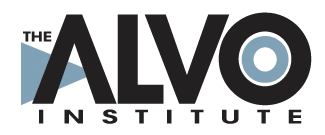By Andrea Strosberg
Instructional Design and Support Specialist, The Alvo Institute
Teachers and school leaders encounter a veritable alphabet of education buzzwords. These new and ever-changing “edu-speak” terms pop up in teacher-training courses, professional development sessions, the media, and in conversation.
Rather than being just another buzzword, blended learning is a robust teaching and learning framework. For teachers and schools exploring blended learning, it might be helpful to consider how some of the more common edu-speak terms fit into the conversation (or don’t).
BL and Buzzwords: A Natural Fit
Many buzzwords fit naturally in the blended learning structure. For example, blended learning is intended to be standards-based, supporting whatever standards are in use.
Whether you’re a proponent or critic of Common Core, blended learning does not come with or propose its own separate learning objectives (though see a discussion of classroom culture and metacognition below). Rather, it allows educators to align their instruction with the goals and standards they choose for their setting/population, Common Core or other. Blended learning is also quite compatible with the emphasis on interdisciplinary learning implicated by Common Core.
A standards-based program often is associated with high-stakes testing as a way to measure progress and achievement. Blended learning’s assessment reach goes beyond high-stakes testing, answering this need with a rich range of assessment options. Establishing a strong data culture is a pillar of blended learning. Instructional decisions should be data-driven, and the data constantly being gathered by BL’s assessment tools inform teachers and students in real-time.
When it comes to striving toward learning goals, blended learning is not here to toss out and replace the methods that are working for teachers. Rather, it encourages the continued pursuit of best practices while incorporating the best technology available.
In fact, the background many teachers have in constructivism, Bloom’s Taxonomy, learning styles, and cultivating critical thinking skills helps them to be successful in using blended learning.
BL: Fulfilling the Promises of Edu-speak
Blended learning provides the methods that bring substance to otherwise potentially empty promises in edu-speak. Many educational approaches claim to be student-centered. Others promise individualized instruction, which is a tall order in a typical classroom.
It is blended learning, however, which achieves these ideals by using assessment data to enable teachers to conduct this differentiated instruction. By design, the structure of the blended learning classroom is student-centered where students work at their own pace to meet personalized objectives.
Another promise fulfilled, blended learning creates self-directed learners by emphasizing goal-setting, self-monitoring, progress-tracking, and students’ awareness of their own assessment data.
Naturally, this leads to growth in students’ metacognition and accountability, allowing students maximum input and decision-making power when it comes to their own learning in the most advanced blended classrooms.
BL: Up-cycling Edu-speak and Re-imagining Its Real-World Potential
While blended learning is “in conversation” with most, if not all, the popular educational buzzwords, it has a lot to say about the meaning and importance of digital literacy. Blended learning pushes digital literacy toward empowering students to move forward, which is beyond simply acquiring functional technology skills.
Students and teachers harness the power of hardware and software to meet articulated learning objectives, not just as supplementary enhancements or fancy tools. In this way, blended learning elevates technology from an end in itself to a means to an end.
As the pioneering force that it is, blended learning is proud to “own” the term disruptive innovation. Indeed, for most educational settings, transitioning to a blended learning framework will necessitate some significant changes in the ways teaching and learning happen. A carefully planned switch to blended learning includes a gradual shift to those new practices, however.
Blended learning acknowledges that there is a place for gamification and the flipped classroom model, but neither of these approaches alone is the single best way to teach and learn. Through systematic evaluation of an individual teacher’s needs, blended learning may mean game-based online learning providers (OLPs) that can be a powerful way to engage students. For other educators, flipping their classrooms all or part of the time might be the ideal.
BL: Directing Terms Toward the Future
“21st Century” for blended learning means acknowledging the reality of society’s expectations of its citizens and the demands this places on schools. 21st Century also means for blended learning the state-of-the-art devices and programs that help students rise to these challenges. Of course blended learning is meant to cultivate college- and career-readiness. We believe that blended learning offers even stronger tools to accomplish this, as it emphasizes ensuring progress for each student¬.
So, the next time you’re tempted to let your eyes glaze over during a PD session full of “edu-speak”, take heart in these practical and progressive definitions that recast often-overplayed buzzwords.
